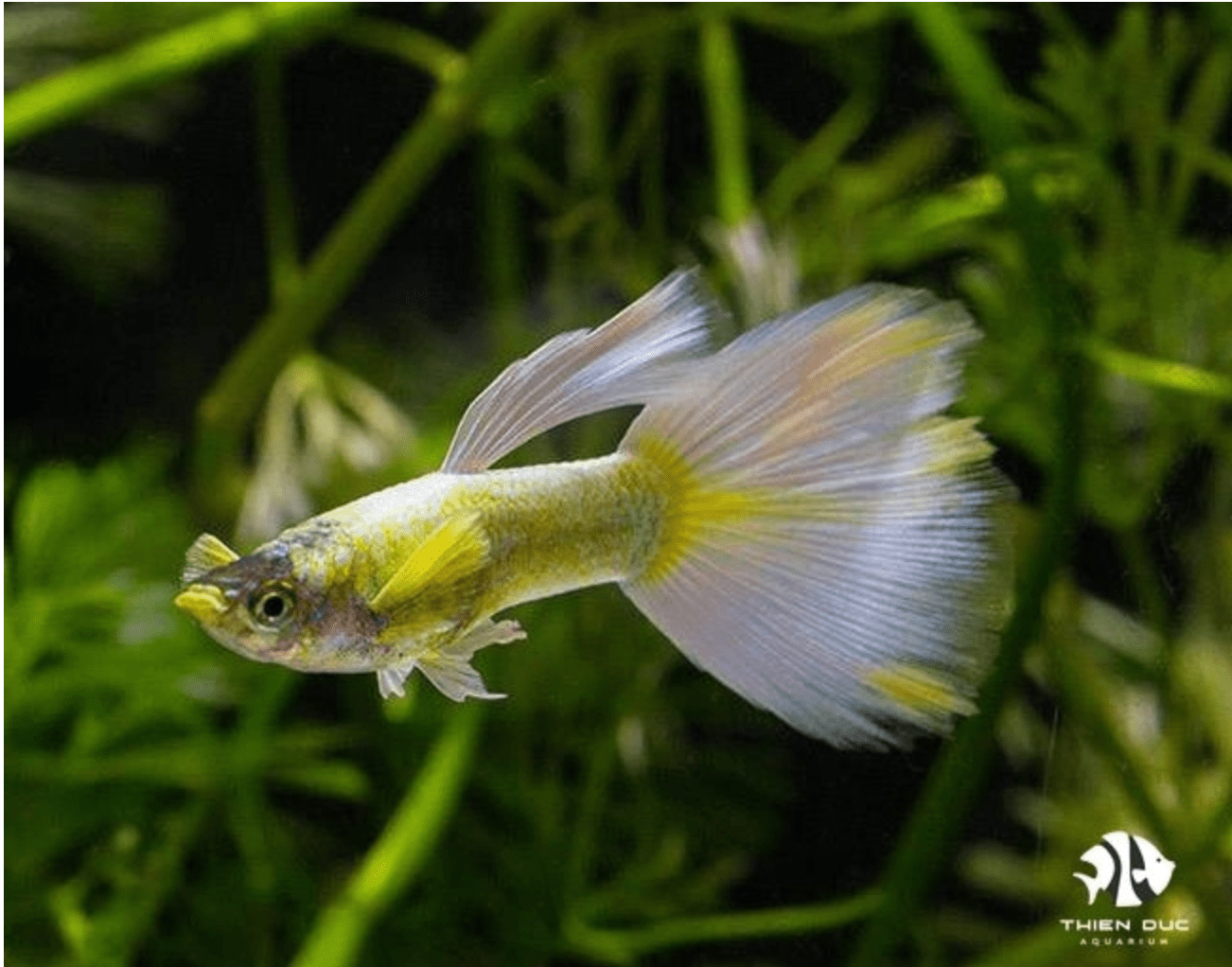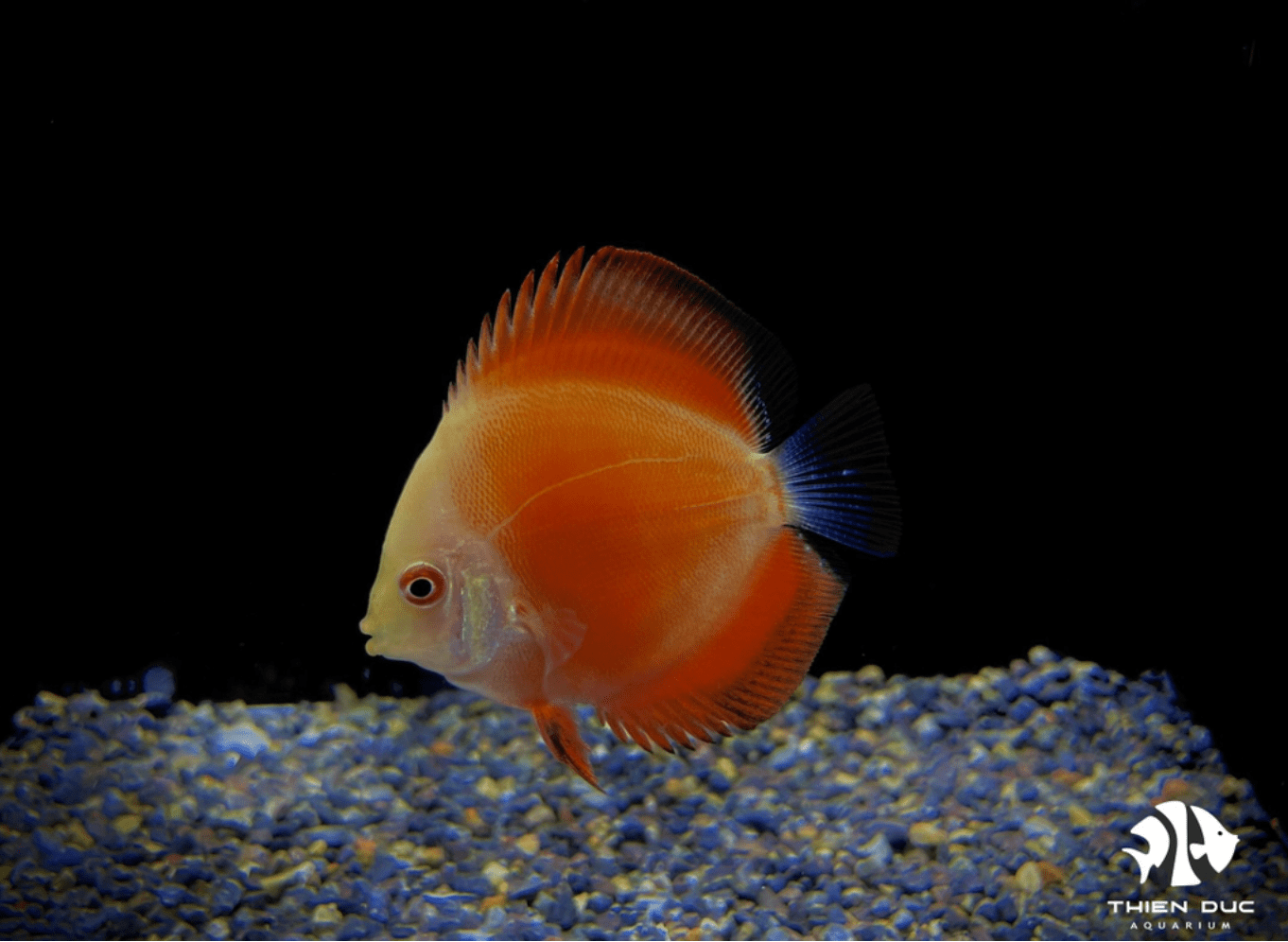Aquarium Driftwood: The Ultimate Guide for Beginners
Driftwood is more than just a decoration; it's a vital element for creating a beautiful and balanced underwater world. This guide is for beginners, showing you how to choose, prepare, and maintain aquarium driftwood to create a stunning environment. At THIENDUC AQUARIUM, we know that natural habitats are crucial for our wild-caught fish, and driftwood is perfect for mimicking their home.
Driftwood: Why Use It in Your Aquarium?
Aquarium driftwood isn’t just decoration—it is a multifunctional element that combines beauty with practicality. To understand why so many aquascapers value it, let’s look at both the aesthetic and biological benefits it brings.

Aesthetic Benefits
Driftwood instantly elevates an ordinary glass box into a work of natural art. Its gnarled shapes, intricate textures, and rustic appeal provide a sense of authenticity and depth that is difficult to achieve with other decorations. A single, well-placed piece of aquarium driftwood can serve as a stunning centerpiece, drawing the eye and anchoring your entire aquascape.
Furthermore, driftwood allows for the creation of specific thematic layouts. Whether you are aiming for a serene, blackwater environment with a tea-stained hue or a lush, jungle-like setting, driftwood is your canvas. When paired with the right plants and rocks, it can tell a story, creating a landscape that feels ancient and wild. This ability to replicate the natural habitats of our fish is why we at THIENDUC AQUARIUM are passionate about its use.
Biological Benefits
Beyond its visual appeal, driftwood offers significant biological advantages that directly contribute to the well-being of your fish.
-
Creates Hiding Places and Territories: The nooks, crannies, and crevices within driftwood provide essential shelter for timid fish. This reduces stress, promotes natural behaviors, and establishes clear territories, which is particularly important for species that can be territorial. For the wild fish we supply, having a secure place to retreat mimics the protective cover they would find in their native streams and rivers.
-
Provides a Surface for Beneficial Bacteria: The porous surface of aquarium driftwood offers an ideal home for beneficial nitrifying bacteria. These microorganisms are crucial for the biological filtration process, converting harmful ammonia and nitrite into harmless nitrate, thereby maintaining stable water parameters.
-
Releases Tannins: As driftwood cures and settles into your tank, it releases tannins—natural compounds that can tint the water a soft, golden-brown. These tannins have mild antifungal and antibacterial properties and can lower the water's pH and hardness, creating a perfect blackwater environment for species like tetras, rasboras, and dwarf cichlids. For beginners targeting these specific species, using aquarium driftwood is an excellent way to achieve the desired water chemistry and visual effect.
Choosing the Right Driftwood
Once you understand why driftwood is so valuable, the next step is knowing how to choose the right type and source.
Types of Driftwood
The world of aquarium driftwood offers a vast selection, each with its own unique properties. Being aware of these will enable you to make an informed decision.
-
Manzanita: Known for its striking, multi-branching shapes, Manzanita is a popular choice for intricate layouts. It’s dense and sinks relatively quickly.
-
Mopani: A two-toned, hard, and dense wood. Mopani wood is a beautiful centerpiece. However, it releases a significant amount of tannins, so proper preparation is a must.
-
Cholla Wood: This is a hollow, spiny skeleton of a cactus. Cholla wood is great for providing small shrimp and fry with a safe place to hide and graze.
-
Malaysian Driftwood: A staple in the hobby, this wood is dense, sinks easily, and is generally safe.

Sourcing Your Driftwood
Where you get your aquarium driftwood is just as important as the type you choose. At THIENDUC AQUARIUM, we recommend focusing on safety and quality.
-
Local Fish Stores (LFS): This is often the safest and easiest option. Reputable stores sell driftwood that has already been cured and is ready to be used. This eliminates much of the guesswork and preparation required.
-
Online Retailers: A wide variety of unique shapes and types are available online. While convenient, always be aware that you will need to perform the necessary preparation steps yourself, as you cannot be sure of its origin or prior treatment.
-
Nature/DIY: While tempting to collect driftwood from a local beach or forest, this path is fraught with risk. Wood from unknown sources can harbor parasites, fungi, and harmful chemicals. Coniferous woods like pine or fir are particularly dangerous as they contain sap that is toxic to fish. For the health and safety of your fish, we strongly advise against this.
Preparing Your Driftwood
Proper preparation is the most critical step in introducing aquarium driftwood into your tank. Failing to do so can lead to cloudy water, unstable parameters, and potential harm to your fish.
The Sinking Problem
New driftwood is buoyant and will float unless it is waterlogged. This is a normal part of the process and can be resolved through patience. Do not try to rush this step.

Boiling/Curing
Boiling is a crucial step that serves multiple purposes. It is a vital part of the preparation of aquarium driftwood.
-
Purpose: Boiling kills any bacteria, fungi, or algae present on the wood. It also helps to quickly release the initial surge of tannins, preventing an extreme "blackwater" effect. Boiling also helps the wood become waterlogged faster, aiding in the sinking process.
-
Process: Place the driftwood in a large pot and cover it completely with water. Bring the water to a rolling boil and let it simmer for several hours, or until the water turns dark brown. You will need to change the water multiple times as it becomes saturated with tannins. It takes a lot of time, but this procedure is vital.
Soaking
After boiling, the driftwood must be soaked. Soaking is the next phase for preparing your aquarium driftwood.
-
Purpose: Soaking continues the leeching process, allowing more tannins to escape from the wood. It also ensures the wood becomes completely saturated and will remain at the bottom of the tank without needing to be weighed down.
-
Process: Place the boiled driftwood in a clean bucket and submerge it in fresh water. Change the water daily or every few days until the water remains clear. This could take anywhere from a few days to a few weeks, depending on the type and size of the wood. A good rule of thumb is to continue soaking until you are happy with the level of tannin release in the tank. For fish that prefer blackwater, you may choose to skip or shorten this step.
Optional Step: Anchoring the Wood
If your driftwood stubbornly refuses to sink after boiling and soaking, you can anchor it to a piece of slate or another aquarium-safe rock using stainless steel screws or super glue (cyanoacrylate gel). This is a temporary solution until the wood becomes waterlogged enough to stay put on its own.
Placement and Aquascaping
Once your driftwood is prepared, you can begin the exciting process of aquascaping.
-
Rule of Thirds: This simple design principle suggests placing your main visual elements—like your primary piece of aquarium driftwood—off-center. Imagine your tank is divided into a 3x3 grid, and place the main features at the intersections of these lines. This makes the composition more lively and eye-catching.
-
Creating Depth: Use multiple pieces of driftwood, varying their sizes, to create a sense of scale and depth. Position larger pieces towards the front and smaller pieces towards the back to make the tank appear larger and more expansive.
-
Planting: Driftwood is the perfect anchor for many popular aquatic plants. Attach plants like Anubias, Java Fern, or Bucephalandra to the wood using fishing line or a small dab of super glue. Over time, the plant will root itself to the wood, and you can remove the line. These plants are low-maintenance and create a stunning, natural aesthetic.
-
Securing: For attaching plants, fishing line is a simple and effective method. For a more permanent solution, super glue gel, which is non-toxic when cured, works wonders for anchoring mosses and other small plants.
Maintenance and Typical Issues
-
Algae Growth: It is normal for a new piece of aquarium driftwood to develop a light layer of green or brown algae. This indicates a robust ecosystem. Consider adding algae-eating species like Otocinclus catfish or Amano shrimp to your tank.
-
Tannin Leaching: A slight tint to your water is a beautiful, natural effect. However, if you prefer crystal clear water, you can use activated carbon in your filter to absorb tannins. Regular water changes will also help to gradually reduce the color.
-
Fungus/Biofilm: Many hobbyists will notice a white, slimy film growing on new aquarium driftwood within the first few weeks. This is a type of biofilm or fungus, a completely harmless occurrence caused by decomposing sugars and nutrients within the wood. It is a temporary phase and will disappear as the aquarium matures. Snails and certain types of shrimp will happily graze on it.
Conclusion
Driftwood is a crucial element for creating a healthy and beautiful aquarium. It provides a natural aesthetic while offering essential benefits like hiding spots and filtration surfaces. THIENDUC AQUARIUM is committed to supplying high-quality, wild-caught fish to the EU. We believe a natural environment, including aquarium driftwood, is key to their well-being. Start your aquascaping journey with our products today.
Contact Information:
-
Address: 57 Le Thi Sieng, Tan Thong Hoi, Cu Chi, Ho Chi Minh City, Viet Nam
-
Mobile: +84903912501
-
Office: +84982577871
-
Email: thien@thienducaquarium.com










